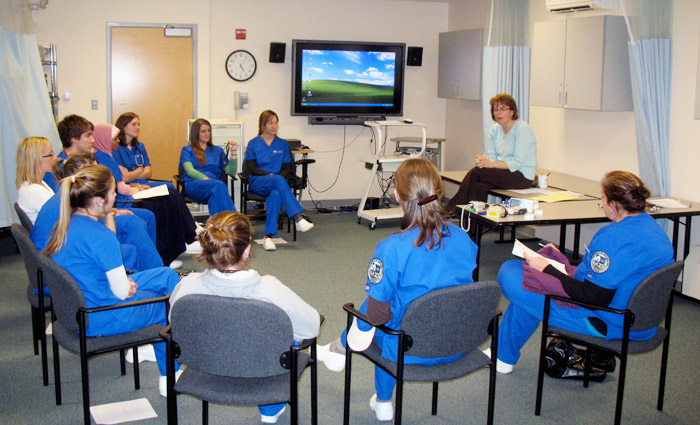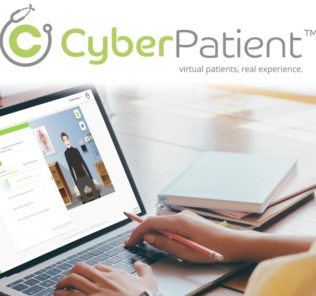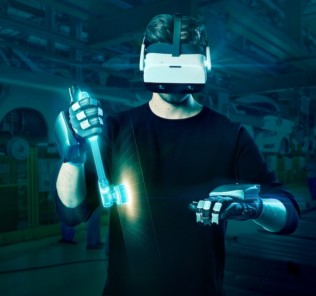Improving Multi-Professional Teamwork Through Trauma Simulation Training Feedback
Today a full article entitled “Improved Multi-Professional Teamwork through Trauma Team Simulation Training Feedback” from Puotiniemi Annukka, Tinnilä Susanna, and Jokela Jorma of Laurea University of Applied Sciences and the Finnish National Defense University in Finland. According to the study, trauma team simulation training is important for developing competence skills in a multiprofessional team. Research shows that working skills of a multiprofessional team seemed to develop as a result of such training!
Background
Trauma is the leading cause of death in the age group up to 44 yr in the Western world (1-2) despite improvements in trauma care over the last four decades. The purpose of trauma team simulation training was to practice the first stages of medical care of a seriously injured patient. The simulation training in the Department of Emergency Medicine of Kanta-Häme Central Hospital (KHCH) trauma team had previously taken place in 2008 provided by Laurea University of Applied Sciences. Simulation training was undertaken again in 2011, as a lot of the Department of Emergency Medicine personnel had changed, and it was felt that there was a real need for training. In Finland, a citizen’s municipality of domicile is responsible for arranging public social and health services. The federation of municipalities is responsible for arranging emergency medical services and urgent care and for the care of patients referred to such care.
Each trauma team simulation training began with a team briefing, followed by the actual simulation training, and ending in a team briefing session. The simulation training cases were based on actual trauma cases that had previously occurred in KHCH. The training was led by a KHCH senior orthopedic surgeon or anesthetist and a Laurea University of Applied Sciences simulation training experts.
Sponsored Content:
The simulation training was steered towards surgeons, anesthesiologists, nurses, laboratory technicians, x-ray technicians, radiologists and medical technologists who worked in the trauma team. The minimum personnel in each training session were trauma team leader, anesthesiologist, surgical nurse, anesthesia nurse, laboratory technician, x-ray technician, radiologist, department secretary, and triage nurse. The instructors of each simulation observed the participants and their actions during simulations, and based on these observations, gave the participants feedback during debriefing at the end of the simulation. Learning from debriefing is not based on passive listening, but the participants actively take part in the debriefing discussion and are able to process their learning experience. (3.)
The patient simulator in use during the training was a HAL® S3201 Advanced Tetherless Patient Simulator. Tetherless technology allows the communications, compressor, and power supply to be inside the simulator, eliminating external tubes, wires and compressors. It connects to real medical devices, such as ventilator, ECG monitor, OSAT monitor, BP cuff, defibrillator or an external pacemaker. (4.) The simulator connects to a wireless computer, controlled by a simulation training technician from Laurea.
Simulation-based training has been a part of teaching in various fields for decades. Highly developed patient simulators have been a part of everyday life in medical training since the turn of the millennium (5). The use of a patient simulator ensures a safe learning environment and a way to evaluate the performance of the trauma team. It has been shown that the use of a patient simulator in simulation training improves the working relationship and clinical performance of a team in both simulations and in real-life situations. (6-8.)
Each trauma team simulation training session lasted approximately 90 minutes. The simulation sessions began with a briefing, including familiarizing the team with the simulator, theory and role assignment. The main areas of focus and the aims of the training were leadership, team work and communication skills, as well as specific medical techniques and situations. (9.)
Sponsored Content:
Methodology
The main material for this study was collected at KHCH by the means of a semi-structured feedback question form (Appendix 1) in simulation training exercises that took place in 2011 to 2013 (n=156). In order to follow up on the development of simulations training, a secondary round of feedback forms were collected in 2015, during KHCH in-house simulation trainings (n=40). The forms were filled out by healthcare professionals taking part in trauma team simulation training sessions. The background details of the participants can be found in table 1. Participants anonymously filled out the semi-structured feedback form immediately after the training session. The feedback form was based on the feedback question form used by Laurea University of Applied Sciences in their simulation training.
The results below are presented in a question-to-question format, with the value from the second round of simulations presented in parenthesis. This will demonstrate the difference in answer values between the two different rounds of simulations.
The participants’ structured answers were analyzed using IBM SPSS Statistics 22 program (10). Simple frequencies and percentages were calculated. Three background variables (occupation, years in current role, and possible previous simulation training) of the participating trainees were used as individual variants to further analyze the data.
The answers to the open worded question at the end of the feedback form were categorized and analyzed using content analysis. Due to the concrete and clear nature of the answers, the categories were not abstracted. According to standard practice of qualitative research, the results of the content analysis were not quantified, to ensure that each answer carries its own individual and equal weight, regardless of the number of answers in the same category.
Table 1. Trauma team`s personnel background
Results
The feedback question form is split in to four main sections of statements; general, simulation exercises, debriefing, and knowledge and skills. The participants choose a numerical value between 1 and 5, where 1 means “Completely disagree”, 2 is “Somewhat disagree”, 3 is “Neither agree nor disagree”, 4 is “Somewhat agree” and 5 is “Completely agree”. At the beginning and end there are Yes/No questions. All the participants, in both rounds of simulations, answered “Yes” to the question “Did you find the simulation exercise useful?” and 96.8 % (100 %) found the training to be clear. To the questions asked at the end of the form (“Do you feel there is a need for future simulation training” and “Would you happy to participate in any future training”) there were no negative answers in either round of simulations.
General
The General section of the feedback form features four statements, the first of which (“I see simulation training as beneficial”) is the most relevant to this article. All of the participants had seen their simulation training as beneficial, with a mean score of 4.60 (4.78). 67.9 % (72.5 %) agreed completely with this statement, with only 3 (0) participants selecting “completely disagree”. There is some question over the validity of the aforementioned three feedback forms however, as most statements in the entire form had a score of 1 or 2, while these participants had stated that they found the exercises useful, and wished that there would be future training. ”Simulation training was what I expected” scored a mean of 4.29 (4.34), “The way that the training progressed was clear” scored 4.30 (4.49) and “I am satisfied with the content and execution of simulation training as a whole” scored 4.36 (4.59). It is worth noting, when comparing the two lots of results, that the in-house simulation training gained higher scores in all of the questions in this section, perhaps indicating improved organization of the training days, and that the participants had a clear expectations of the simulations. Overall, it appears that the participants in all of the simulations saw simulation training as a beneficial learning tool.
Simulation Exercises
In the Simulation Exercises section of the feedback form the statement “There was an appropriate number of exercises” scored a mean of 4.10 (4.12), “The simulation exercises were of an appropriate length” scored 4.20 (4.54), “Simulation exercises were well planned” scored 4.20 (4.49), “Simulation exercises were well managed” scored 4.13 (4.51), “Simulation exercises corresponded well to situations I have encountered in real life” scored 4.00 (3.78) and “Simulations were life-like” scored 3.76 (3.78). Although a majority of 64.1 % (75 %) of the participants agreed that the simulations corresponded well to situations they have encountered in real life, just under a quarter (24.9 %) did not agree nor disagree in the first round of questionnaires. This percentage rose to 30 % for the in-house simulations, and 6.7 % disagreed. This may indicate that the in-house simulations were not designed to be as life-like as they had previously been, and this could be taken in to consideration when future simulation training is developed.
Debriefing
The first statement in the Debriefing section, “Debriefing was a useful part of the exercise and it supported the training well”, scored a mean of 4.48 (4.54), with 91.7 % (100 %) of the participants completely or somewhat agreeing. “Debriefing was of an appropriate length” scored a mean of 4.44 (4.61), with 89.1 % (100 %) of the participants agreeing. “Debriefing assisted me in realizing potential areas of improvement” scored 4.25 (4.27) with 79.5 % (80.0 %) of the participants agreeing.
Knowledge and Skills
In the Knowledge and Skills section of the feedback question form the statement “I gained new knowledge or ideas during the simulation training” scored a mean of 4.09 (4.27), with 80.8 % (90.0 %) of the participants completely or somewhat agreeing and 16.7 % (10.0 %) neither agreeing nor disagreeing. “I learned something that will change the way I do things in the future” scored 4.13 (4.20), with 83.9% (87.5 %) of the participants completely or somewhat agreeing and 12.8 % (12.5 %) neither agreeing nor disagreeing. The statement “The training day helped me improve the way I work” scored a mean of 4.24 (4.29), with 87.2 % (95.0 %) of the participants agreeing and 9.6 % (5.0 %) neither agreeing nor disagreeing. These scores seem to clearly indicate that simulation training is seen as a good way to improve the participants’ skill sets. Based on the vast majority of positive values for the second statement in this group, it could be deducted that simulation training is a good forum to introduce new working practices and standards.
Discussion
The present study found that during a further analysis of the data, using the participant’s occupation, length of service, and previous simulation training as variables, no significant correlations were found. Whether the participant was a nurse or a doctor for example, or had been in their profession for a short or a long time, had no impact on their average answer scores. It was concluded that further studies were needed, with more specialized, in-depth questionnaires designed for these studies. It was also noted that the participants seemed, in general, inclined to give mainly positive answers to the questions asked. This tendency can possibly accounted for as a response bias and due to this bias, it was again felt that further study is indeed needed in the field of simulation training of trauma teams.
Limitations
The total number of responding personnel was rather high and their perception were similar during the trauma team simulation training. However, this is the first pilot study aiming to collect at KHCH by the means of a semi-structured feedback question form in simulation training exercises that took place in 2011 to 2013. The findings of the present study can be used to develop a hypothesis for future studies.
Conclusion
In this study of the answers of the feedback question forms has given some valuable information about the importance of simulation training of trauma teams. It highlights debriefing as a valuable learning tool. It has become clear that further simulation training is wanted and needed, but it is also clear that further study in to the effectiveness and methods of training is needed. To improve further studies, the authors of this article recommend that the feedback form is re-designed, to allow for more effective data analysis, and to attempt eliminating response bias. According to the study, trauma team simulation training is important for developing competence skills in a multiprofessional team. Research shows that working skills of a multiprofessional team seemed to develop as a result of such training (12).
Abbreviations
Declarations
Ethics approval
No ethical approval was necessary for this study, but consent for participation and publication was acquired from the Central Hospital of Kanta-Häme. (15.1.2016) (13, 14).
Consent of publication
Availability of data and material
Competing interests
AP, ST and JJ have no competing interest related to this study.
Funding
To execute this study, no funding was needed. The costs for travel to the Kanta-Häme Central hospital, Hämeenlinna was covered by the Laurea University of Applied Sciences.
Authors’ contributions
JJ conceived the idea. AP, ST, and JJ contributed to the planning of the study. Electronic collecting and extracting data were facilitated by Timo Kumpulainen. AP and ST analyzed the data. All authors contributed to the writing of the manuscript and have approved the final version.
Acknowledgements
We acknowledge all the teams that participated in the study. Sincere thanks to for reviewing the manuscript. We would also like to convey our gratitude to, Ari Palomäki Chief at the Department of Emergency Medicine of Kanta-Häme Central hospital, for providing cooperating for this study.
References
1. Centers for Disease Control and Preventionhttp://www.cdc.gov (accessed 3 July 2017)
2. Norton, R. and Kobusingye, O. Injuries. N Engl J Med, 2013; 368: 1723–30.
3. McDonnell, L., Jobe, K., & Dismukes, R. (1997). Facilitating LOS debriefings: A training manual (NASA Technical Memorandum 112192). Moffett Field, CA: National Aeronautics and Space Administration.
4. gaumard/”>Gaumard Scientific Company, Inc. http://www.gaumard.com/catalogsearch/result/?q=The+patient+simulator+in+use+during+the+training+was+a+HAL%C2%AE+S3201+Advanced+Tetherless+Patient+Simulator.+ (accessed 3 July 2017)
5. Hovancsek M. (2007) Using simulation in nurse education. In Simulation in Nursing Education; from Conceptualization to Evaluation (Jeffries P.R., ed.), National League for Nursing, New York, pp. 1–9.
6. Georgiou, A. and Lockey DJ. The performance and assessment of hospital trauma teams. Scandinavian Journal of Trauma, Resuscitation and Emergency Medicine 2010; 18: 66.
7. Holcomb JB, Dumire RD, Crommett JW, et al. Evaluation of trauma team performance using an advanced human patient simulator for resuscitation training. J Trauma 2002;52:1078-85.
8. Steinemann S, Berg B, Skinner A, et al. In situ, multidisciplinary, simulation-based teamwork training improves early trauma care. J Surg Educ 2000;68:472–7.
9. Small SD, Wuerz RC, Simon R, Shapiro N, Conn A, Setnik G, et al. Demonstration of high-fidelity simulation team training for emergency medicine. Acad Emerg Med. 1999;6:312–323.
10. Wagner, W.E., 2007. Using SPSS for Social Statistics And Research Methods, Pine Forge Press, pp: 101.
11. Østergaard D. National Medical Simulation training program in Denmark. Crit Care Med 200432S58–S60.
12. Cooper JB, Singer SJ, Hayes J, Sales M, Vogt J, et al. 2011. Design and evaluation of simulation scenarios for a program introducing patient safety, teamwork, safety leadership and simulation to healthcare leaders and managers. Simul. Healthc. 6(4):231–38.
13. Finnish Advisory Board on Research Integrity. Responsible conduct of research and procedures for handling allegations of misconduct in Finland – RCR guidelines and ethical review in human sciences. http://www.tenk.fi/sites/tenk.fi/files/HTK_ohje_2012.pdf. Accessed 3 July 2017.
14. Finnish Advisory Board on Research Integrity. Ethical principles of research in the humanities and social and behavioural sciences and proposals for ethical review. http://www.tenk.fi/sites/tenk.fi/files/ethicalprinciples.pdf . Accessed 3 July 2017.
Appendix 1.
EVALUATION OF SIMULATION TRAINING
Please choose your opinion on a scale of 1-5 (1 – Strongly disagree – 5 – Strongly agree)
Simulation as a whole
I am satisfied with the content and structure of the training as a whole 1 2 3 4 5
Simulation training met my expectations
Comments:
Application of theoretical knowledge and skills in simulation
Pre-simulation theoretical learning was adequate 1 2 3 4 5
I was able to properly apply my theoretical knowledge in the simulation situation 1 2 3 4 5
I was able to acknowledge the patient’s need for care in the simulation 1 2 3 4 5
I utilized healthcare practices in the simulation 1 2 3 4 5
I gained new knowledge in the simulation 1 2 3 4 5
Comments:
Simulation situations
There was an appropriate amount of simulation situations 1 2 3 4 5
Simulation situations lasted for an appropriate amount of time 1 2 3 4 5
The way the simulation day was constructed was clear 1 2 3 4 5
I find the simulation centre a clear learning environment 1 2 3 4 5
Comments:
Debriefing
I found debriefing to be a useful situation and it supported my learning 1 2 3 4 5
I found debriefing a safe way to talk about my learning experience 1 2 3 4 5
Debriefing lasted an appropriate time 1 2 3 4 5
Debriefing helped me understand previously experienced care situations 1 2 3 4 5
Comments:
Simulation tutors
The tutors supported my learning well 1 2 3 4 5
The tutors had appropriate knowledge and skills to lead the situation 1 2 3 4 5
The construction of simulations was well planned 1 2 3 4 5
Comments:
Simulations during practical training
I think that simulation training fits well within practical training 1 2 3 4 5
Simulations supported my practical training 1 2 3 4 5
I am able to apply knowledge and skills gained in practice 1 2 3 4 5
Simulations mirrored situations that I have encountered in practical training 1 2 3 4 5
Comments:
How I would like to see simulation training being developed:
THANK YOU FOR YOUR FEEDBACK!
Today’s article was guest authored by Phd, Adjunct Professor at Laurea Univeristy of Applied Sciences.
Have a story to share with the global healthcare simulation community? Submit your simulation news and resources here!
Learn more about Multi-Professional Teamwork through Trauma Team Simulation!
Sponsored Content:


















